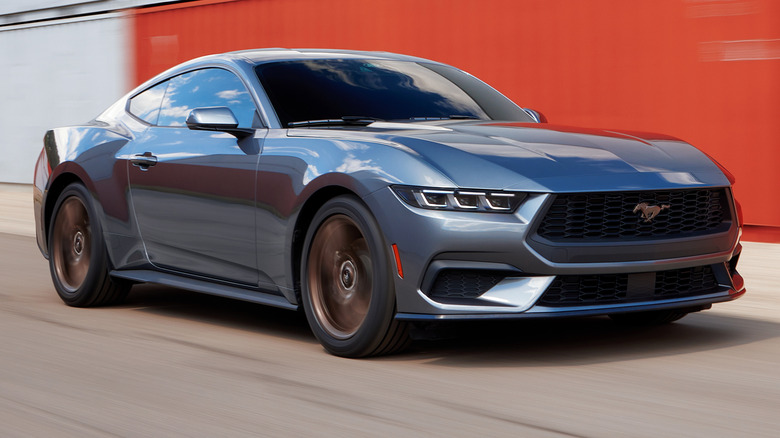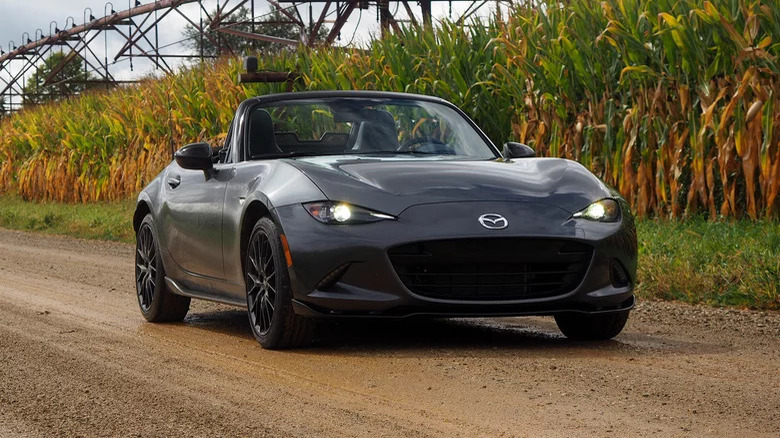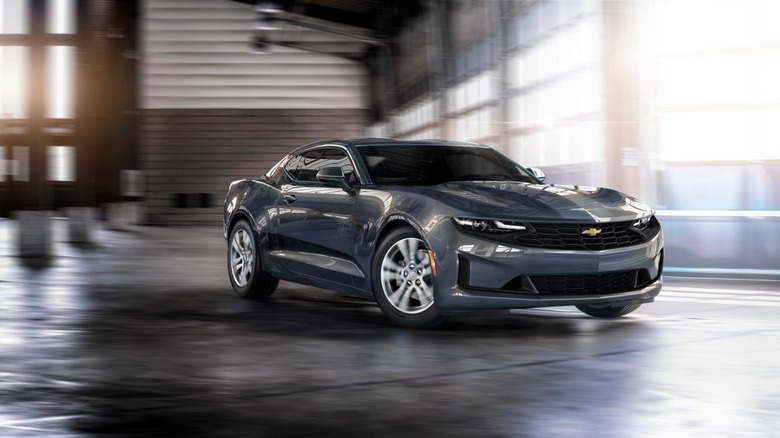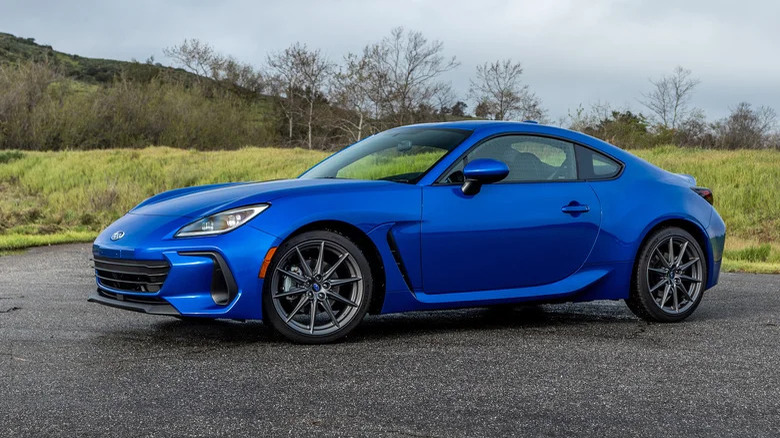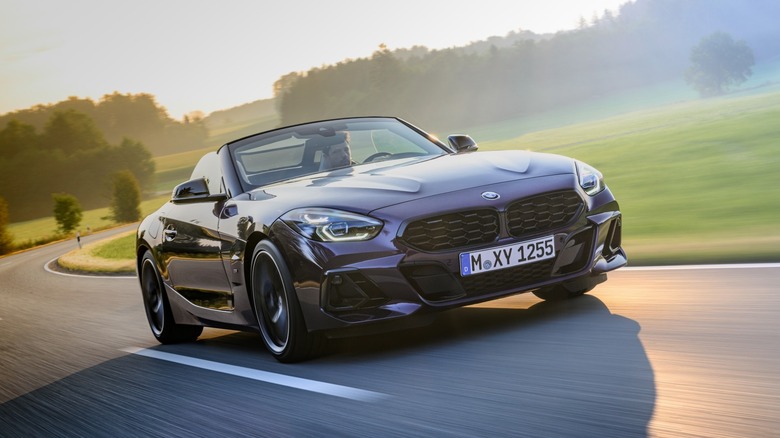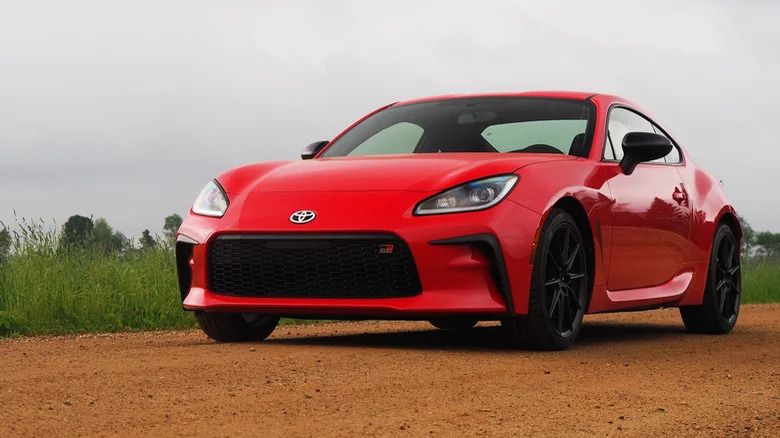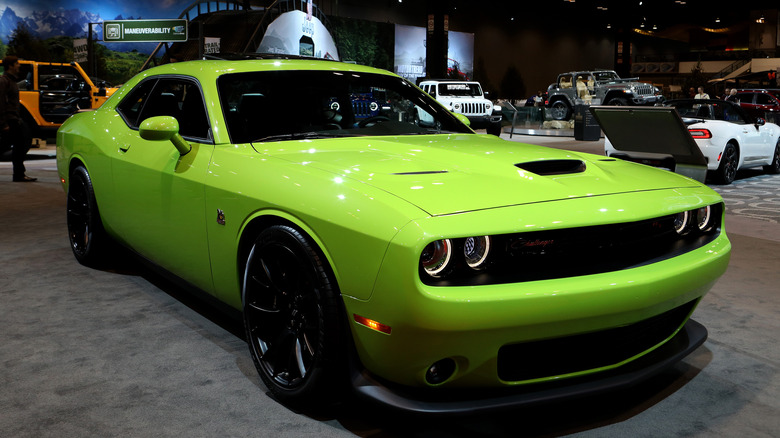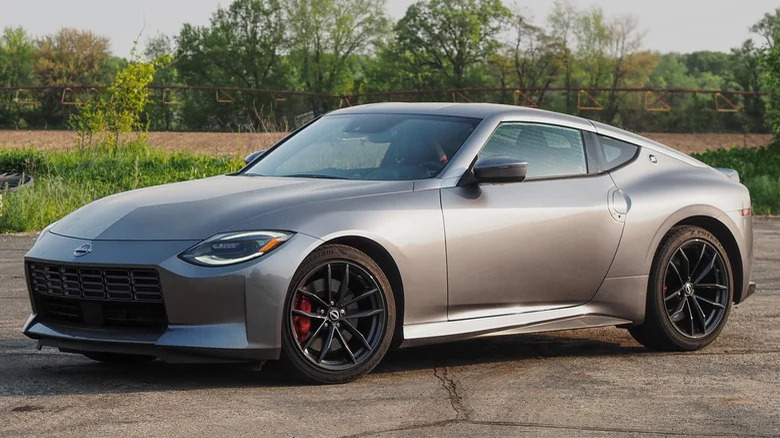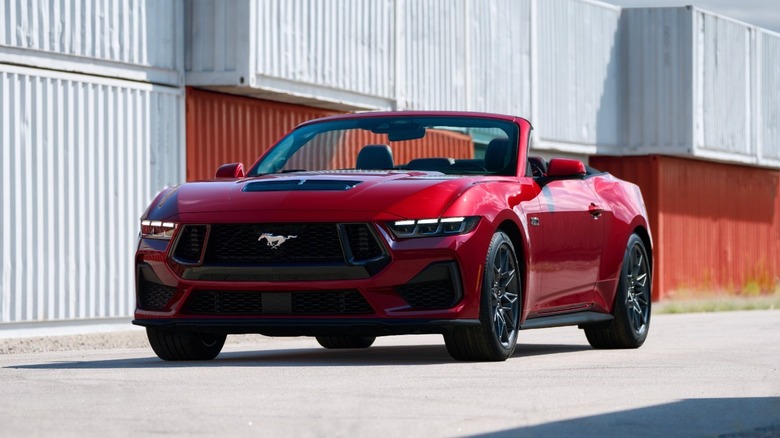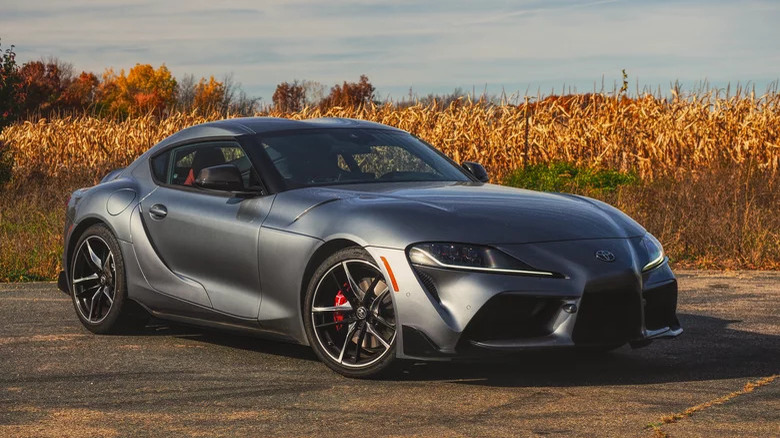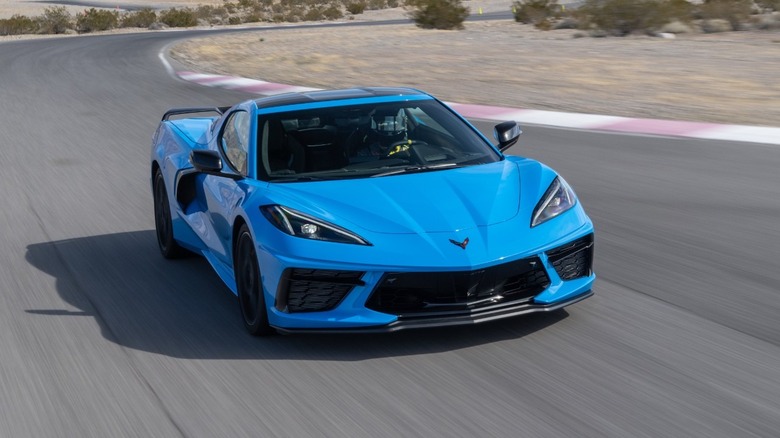10 Sports Cars With The Lowest Maintenance Costs
The sports car segment isn't as lucrative for manufacturers as it once was, with buyers choosing the practicality of high-powered SUVs and crossovers over the inherent impracticality of a two-door coupe or roadster. However, there are still plenty of options on the market if you're looking for a new sports car, ranging from lightweight drop-tops to old-school V8 muscle cars. It won't stay that way forever — several sports car favorites are set to be axed soon in favor of electric alternatives — so if you're considering finally splashing out and buying yourself a weekend toy, now is as good a time as any to do it.
Buying the car is only one part of the equation, though. Running costs like maintenance can sometimes catch buyers out since an "affordable" car can start to become a lot less appealing if you have to spend a significant portion of your initial outlay just keeping it on the road. Luckily, these 10 new sports cars shouldn't break the bank to maintain.
Mazda MX-5 Miata
The humble Miata is one of the best-selling sports cars of all time and for good reason. It offers all the sports car you'll need at a temptingly affordable price, with the latest ND MX-5 Miata managing to improve on the already impressive value for the money of its predecessor. Manual sales might be declining as a whole across the U.S., but the Miata is still offered with a stick shift, and it's an excellent stick shift at that. In fact, we thought it was one of the best on the market, regardless of price, when we reviewed it in 2022.
The fact that the Miata remains one of the cheapest new sports cars on the market is made even better by the fact that it's also one of the cheapest to maintain. Data from CarEdge suggests that maintenance and repair costs for the first five years of ownership will add up to just $1,564, with Mazda's reliability and plentiful parts availability helping to keep the price as low as possible.
Chevrolet Camaro
The 2024 Camaro is set to be the last model year before Chevy launches an all-new successor, with the current-generation car being in production since 2016. That means Chevy has had years to iron out any issues with the car, so it should be more reliable than ever. A range of tried-and-tested engines are offered, with base-spec cars getting a 275-horsepower, four-cylinder engine, but the higher-spec trims still pack V8 power. Incidentally, the Camaro is currently the cheapest new V8-powered car on sale in the U.S., beating its long-time rival the Ford Mustang by a small margin.
Maintaining a Camaro is just as wallet-friendly, with CarEdge estimating a total cost of $1,910 over five years. While some enthusiasts will likely prefer to wait it out and see what the next-generation Camaro brings to the table, the 2024 model is still a great deal considering the low initial asking price and even lower maintenance costs. Orders for the 2023 model will cease in June, with orders for 2024 being taken thereafter.
Subaru BRZ
The second-generation Subaru BRZ launched in 2022, and we found driving it to be endless fun. Its biggest talent is its ability to turn everyday drives into exciting ones, thanks to its excellent manual transmission, sharp handling, and light curb weight. One of the main criticisms levied at the original BRZ was its relative lack of power, but the current-gen car packs a larger 2.4-liter Boxer engine that packs plenty of punch for such a small car. Really, there's not much to dislike, apart from perhaps its infotainment system, which is clearly outdated even by sports car standards.
But to focus on the tech setup in a sports car like this is to miss the point — this is a car designed to be driven, and nothing more. Its approachable power means you're unlikely to hit license-losing speeds even if you push it to its limits, and the typical high Subaru build quality means it shouldn't complain even if you do thrash it every now and then. You can do so without risking breaking the bank too, as maintenance costs over five years are estimated to be $1,726, according to CarEdge.
BMW Z4
While the BMW Z4's styling has proved to be divisive, its performance credentials are much less debatable. The current generation car is significantly sportier than the previous Z4, in part thanks to the Toyota collaboration that made the existence of the current car possible in the first place. Because it has to share a platform (and all its oily bits) with Toyota, there's no hardtop Z4 ... well, there is, but it wears a Toyota badge, and it's called the Supra. Underneath the skin, both cars are all BMW, packing six-cylinder engines and rear-wheel drive.
The Z4 is far from the cheapest sports car on the market to buy, and that additional premium is reflected in its maintenance costs. However, it's still within the realm of "attainable" in both departments. CarEdge estimates that maintenance costs over five years should add up to $3,722 — still not bad for a straight-six, open-top sports car. Crucially, it's still cheaper than its biggest convertible rival, the Porsche 718 Boxster, which will cost $4,180 to keep running over the same period.
Toyota GR86
The other half of the "Toyobaru" twins, the GR86 offers just as much affordable glee as its Subaru-branded counterpart. Mechanically, the two cars are nearly identical, and as such, they both sport the same 2.4-liter boxer engine and top-notch manual transmission. There's an automatic available too, if you're not a fan of shifting gears yourself, and it's pretty good. But, the manual is still the pick of the bunch. Apart from the BRZ, the GR86's biggest rival is the drop-top Mazda Miata, but being a roadster makes the Mazda inherently less practical, and there's more storage space in the Toyota too.
That only matters if you're planning on using it as a daily driver, which you should, because it's temptingly affordable to maintain. CarEdge doesn't specify an exact amount for the GR86, but the BRZ is close enough to identical that its $1,726 five-year cost estimate should be almost spot on.
Dodge Challenger
The veteran Challenger is being retired after 2023, with production ceasing to make way for an all-new electric muscle car within Dodge's lineup. The Challenger hasn't seen any major overhauls throughout its 15 years on sale, which is both a testament to the original design's longevity and the primary reason why Stellantis decided its time was up. For now, it remains one of the cheapest ways to buy a new V8 car, although a V6 is still offered in base-spec versions if you're on a tighter budget.
The Challenger is old-school in every sense of the word, and depending on your personal preferences, that's either a good or a bad thing. Don't expect cutting-edge tech or luxury interior materials, or even handling that can compete with other modern sports cars. However, the Challenger is still one of the best value ways to get raw straight-line power, and its maintenance costs are solid value for money too. CarEdge estimates you'll pay out $2,318 in maintenance and repairs over a five-year period.
Nissan Z
The term "new old-school" might seem like an oxymoron, but it's arguably the best way to describe the 2023 Nissan Z. The long-awaited successor to the 370Z doesn't make any substantial changes to the formula, with a V6 up front, rear-wheel drive, and a design that takes inspiration from the classic Datsun 240Z. It's hardly the radical overhaul that some enthusiasts were expecting, but it does mean that the Z remains affordably priced, and impressively powerful, with 400 horses and 350 pound-feet of torque.
The ancient cabin of the 370Z is long gone and replaced with one that's a lot more modern than before, with better tech as standard. Both a manual and an auto option are offered, although purists will almost invariably take the manual. On the road, it's not quite as refined or nimble as some of its rivals, but then it's considerably less expensive than most of them too. There is no precise data available on the Z's running costs yet, but the $1,716 five-year maintenance cost of the 370, per CarEdge, should give you a good idea of what to expect.
Ford Mustang
Originally unveiled in 2022, the 2024 Ford Mustang does what no other American sports car dares — it's a new generation of the iconic car, with no electrification options in sight. The Chevy Camaro's days are numbered, and the Dodge Challenger is just a few months away from being axed, but Ford has defied the trend and launched the seventh-gen Mustang with its traditional range of four-cylinder and eight-cylinder engines. Those engines have been reworked for better efficiency and power, with the 5.0-liter Coyote V8 shared with the current F-150 pickup and the 2.3-liter EcoBoost launching with the Mustang.
Ford has already opened the order books for 2024, although there's no rush to get one, as the new generation launch means the car is guaranteed to be around for a while yet. Across the range, it remains as competitively priced as ever, and running costs are equally so, with CarEdge reporting that the average total bill over the first five years of ownership will come to $1,915.
Toyota GR Supra
Like it or loathe it, the fifth generation of the Toyota Supra had everyone talking when it was unveiled. The biggest point of contention was that, underneath, the Supra wasn't much of a Toyota at all, with most of its parts being shared with the BMW Z4. However, take the car for a drive and it starts to make sense — it's practical enough to drive every day, it's fast enough to keep up with the competition, and it's fun even at speeds that won't risk losing your license.
Granted, rival cars have some advantages: a 718 Cayman boasts superior dynamics and a more prestigious badge, and the Nissan Z is considerably cheaper and better suited to aftermarket mods. However, the Supra remains a strong contender in its field, and surprisingly, its BMW underpinnings don't affect its estimated maintenance costs: CarEdge reports a bill of just $1,489 over five years.
Chevrolet Corvette
The current-generation Corvette is a radical reinvention of one of America's best-loved sports car nameplates, but it's a pretty excellent one. In our review of the 2021 Corvette, we called it an "utter bargain," with supercar performance available at sports car pricing. It looks like a supercar too, with its mid-engine layout and angular bodywork proving to be a guaranteed conversation starter during our time with the car. It's still pricier than most of the other cars on this list to buy, but value for money remains top-notch.
One of the key advantages of Corvettes historically has been that they're cheaper to maintain than their similarly-priced German rivals, and the C8 does nothing to change that. CarEdge estimates maintenance costs of $2,259 over the first five years of ownership, a figure that's only a few hundred bucks more than sports cars that retail for half the price. The C8 Corvette is not without its detractors, but few could argue with its superior value for money, both in initial pricing and running costs.
